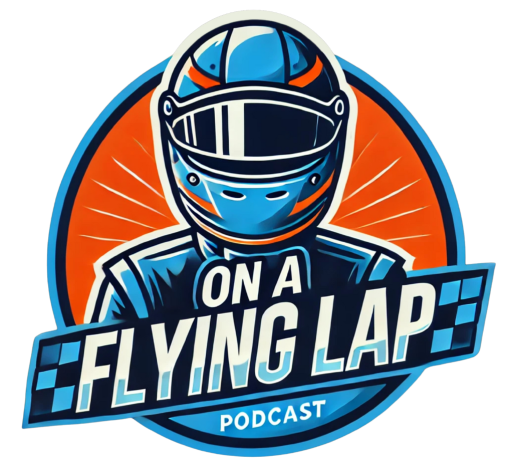Understanding Formula 1 Terminology: A Comprehensive Guide
Formula 1 is a high-speed, highly technical sport that comes with a unique vocabulary. To fully understand race strategies, car performance, and the rules governing F1, it’s essential to be familiar with the terminology used by teams, drivers, and commentators. This guide covers an extensive range of Formula 1 terms to help both new and experienced fans follow the action more closely.
Technical Terms
Downforce
The aerodynamic force that pushes the car down onto the track, increasing grip and stability. Higher downforce improves cornering but reduces top speed on straights.
Porpoising
An aerodynamic issue where the car bounces up and down at high speeds due to ground-effect aerodynamics. It was a major concern in the 2022 season with new car regulations.
Brake Bias
The distribution of braking force between the front and rear wheels. Drivers adjust this setting based on cornering needs and tire wear.
Power Unit (PU)
Modern F1 cars use a hybrid power unit, consisting of:
- Internal Combustion Engine (ICE) – The turbocharged V6 engine.
- MGU-K – Converts braking energy into electrical energy.
- MGU-H – Converts excess turbo energy into electrical energy.
- Energy Store (ES) – The battery that stores electrical energy for later use.
- Turbocharger – Increases engine efficiency by forcing more air into the combustion chamber.
Telemetry
Real-time data transmission from the car to the team, providing information on speed, tire wear, fuel usage, and engine performance.
Rev Limiter
A device that prevents the engine from exceeding a set RPM limit to avoid damage. When drivers hit the limiter, they can no longer accelerate further.
Torque
A measure of rotational force from the engine. More torque improves acceleration, particularly out of slow corners.
Suspension Setup
Teams adjust the suspension to optimize handling based on track characteristics, balancing comfort and performance.
Tire and Pit Stop Terms
Tire Compounds (C1-C5)
Pirelli produces five dry tire compounds (C1 being the hardest, C5 the softest), and three are selected for each race.
Scrubbed Tires
Used tires with some wear but still usable. Scrubbing removes excess rubber and helps improve performance.
Blistering
A tire issue where extreme heat causes the rubber to break down and form bubbles, reducing grip.
Flat Spot
A worn-out area on a tire, usually caused by heavy braking that locks up the wheel. This leads to vibrations and reduced performance.
Pit Stop Delta
The estimated time a driver loses when making a pit stop, including time in the pit lane and rejoining the track.
Double Stack
A pit stop strategy where both team cars pit in succession. The second driver must wait until the first car’s service is complete.
Pit Lane Speed Limit
To prevent dangerous speeds in the pit lane, drivers must adhere to a strict speed limit, usually 60 km/h during practice and 80 km/h during the race.
Racing and Strategy Terms
Racing Line
The optimal path around a circuit to achieve the fastest lap times.
Out Lap
The lap after leaving the pits, typically used to warm up tires before a flying lap in qualifying or race resumption.
Flying Lap
A full-speed qualifying lap where drivers push for the best possible time.
In Lap
The lap before pitting, usually driven at full speed to minimize time loss.
Undertray / Floor
The flat-bottomed section of the car that plays a crucial role in generating ground-effect downforce.
Crossover Point
The moment when track conditions change enough (e.g., rain drying up) to switch between dry and wet tires.
Fuel Saving
Drivers manage fuel consumption through lift-and-coast techniques, where they release the throttle early before braking.
Brake Lock-Up
When a driver applies too much brake force, causing the wheels to stop rotating while the car continues moving forward. This leads to flat spots on the tires.
Lifting and Coasting
A technique where a driver lifts off the throttle before a braking zone to save fuel and tires without losing significant lap time.
DRS Train
A situation where multiple cars follow each other closely, all using DRS, making overtaking difficult.
ERS Deployment Mode
Drivers can choose how much energy to use from the ERS system, either maximizing power for overtaking or conserving it for later use.
Overlapping
When a driver gets part of their car alongside an opponent’s car in an attempt to make a pass.
Wheel-to-Wheel Racing
When two or more cars are side by side, battling for position through corners and straights.
Flags and Penalties
White Flag
Indicates a slow-moving vehicle on the track, such as a car with a problem or a safety vehicle.
Red Flag
Stops the session or race due to severe incidents, track conditions, or weather issues.
Green Flag
Signals the track is clear after a caution period.
Time Penalty
A penalty adding seconds to a driver’s total race time, often for track limit violations or unsafe releases in the pit lane.
Drive-Through Penalty
A penalty requiring the driver to pass through the pit lane without stopping, costing significant race time.
Stop-and-Go Penalty
A penalty where the driver must stop in the pit box for a designated period (e.g., 10 seconds) before rejoining the race.
Grid Penalty
A driver is demoted on the starting grid due to infractions like engine component changes beyond the limit or causing a collision.
Post-Race Investigation
When an incident is reviewed after the race, and penalties may be applied retroactively.
Conclusion
Formula 1 is a complex, ever-evolving sport where understanding terminology enhances your viewing experience. This guide covers the technical, strategic, and regulatory language used in F1, helping both new and experienced fans follow the intricacies of each race. Whether it’s mastering tire strategies, knowing when a DRS overtake is possible, or understanding post-race penalties, being fluent in F1 terminology allows for a deeper appreciation of the sport.
To learn more about Formula 1, visit our F1 Explained page.
